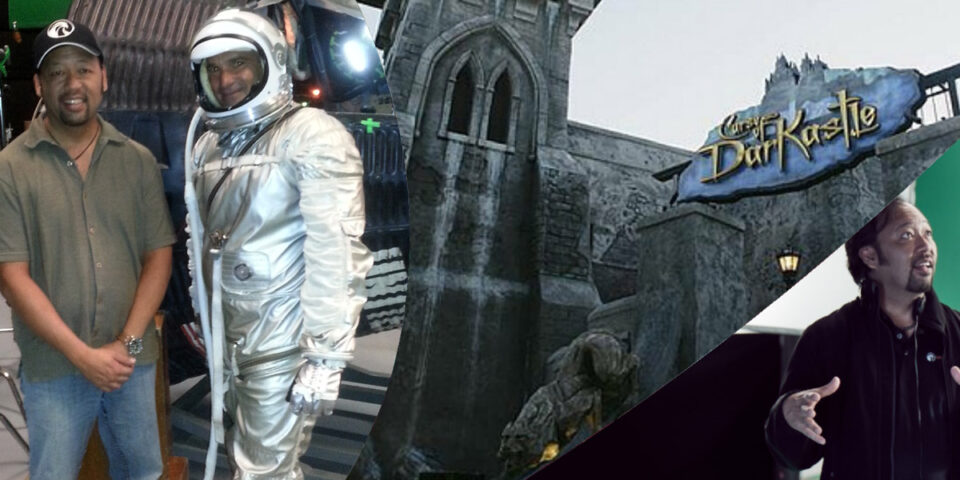"There was a line out the door…around the block…down the street.” When you hear of an event, attraction, or show attached to phrases like these, it’s safe to assume something pretty spectacular was waiting at the end of that line.
In our world of Entertainment Design, we spend our days ideating, planning, and constructing the spectacular things that we hope are worth lining up to experience. The way we treat that line of eager guests has become its own art form, and we’re constantly refining what it can deliver in both function and narrative. That’s the modern attraction queue.
"Queue;” you might think I just decided to change vernacular for no reason whatsoever, so I think it’s important to first establish just why we use the terminology we use when referring to this component of our designs. I’ll do my best not to offend Mr. Webster and his dictionary in what I’ll say next. A line is anything connecting or extending through two points in space.
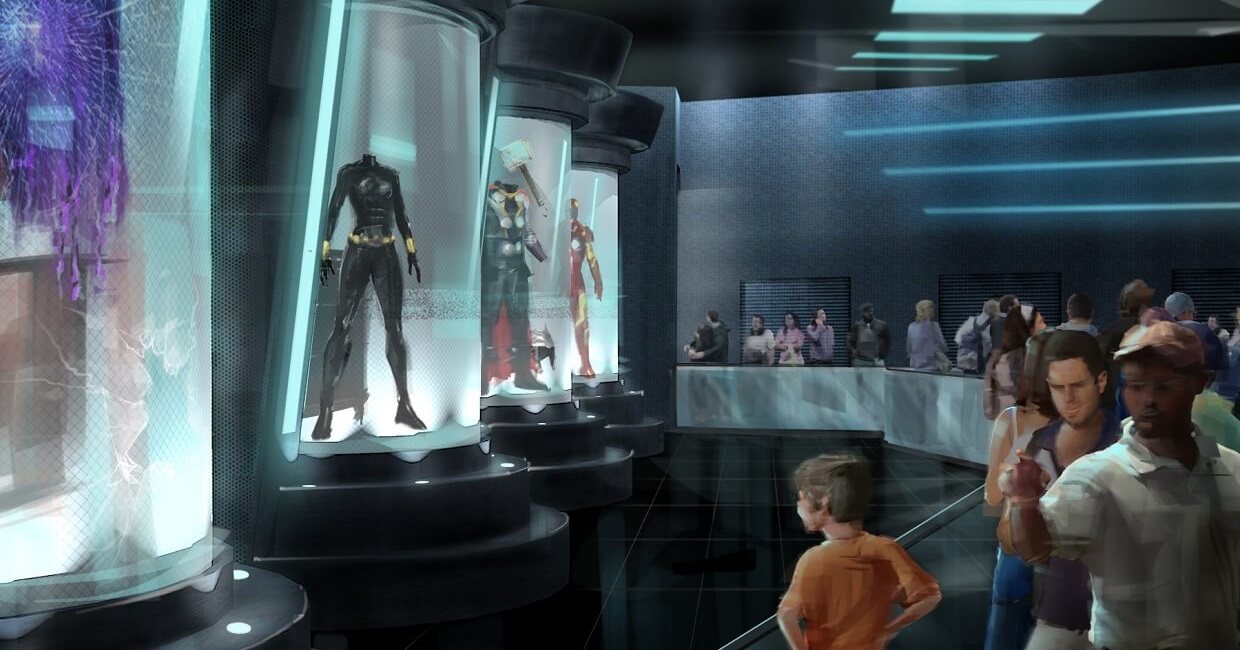
Guests act as active characters in the story on this 3D interactive dark ride themed after The Amazing World of Gumball found in the Cartoon Network zone at IMG Worlds of Adventure in Dubai.
That’s awfully vague in the general world of design. Luckily for us, in the late 1830’s, the Middle English term queue evolved to refer specifically to a line of people…much more relevant to our industry. We go further by using queue area to refer to the portion of an attraction building or section of outdoor environment through which our line of guests travels on the way to their experience.
You may also hear of queue scenes which should inform you that the line of guests is passing from one physical environment or storytelling zone into another. I’ll likely use all of these terms, and in various combinations, throughout the duration of this post, so I felt it. was important to get the semantics out of the way.
If you’ve been to a major theme park recently, you’re likely to have noticed a shift away from the endless fields of posts, chains, and railings of the past. Odds are that, unless you specifically attended a popular seasonal event or sought to ride a brand new attraction on its opening weekend, you haven’t been trapped in a mundane queue like that for some years now.
Guests today are the beneficiaries of a thorough renaissance in the way in which designers and park operators deliver their experiences and stories. For the past fifteen years, we’ve witnessed a remarkable increase in the size and complexity of each new park, land, or attraction that has opened its doors to the public. That complexity has justifiably extended into the storylines and narratives which are woven into those experiences.
Offering the ability to grow our storytelling durations from sometimes less than four minutes to upwards of sixty minutes, attraction queues provide the perfect setting for designers to expand narrative worlds, build anticipation, and entertain our guests in a space that was once relegated to a few misting fans and lots of boredom. We’re not ones to let an opportunity like that pass us by.
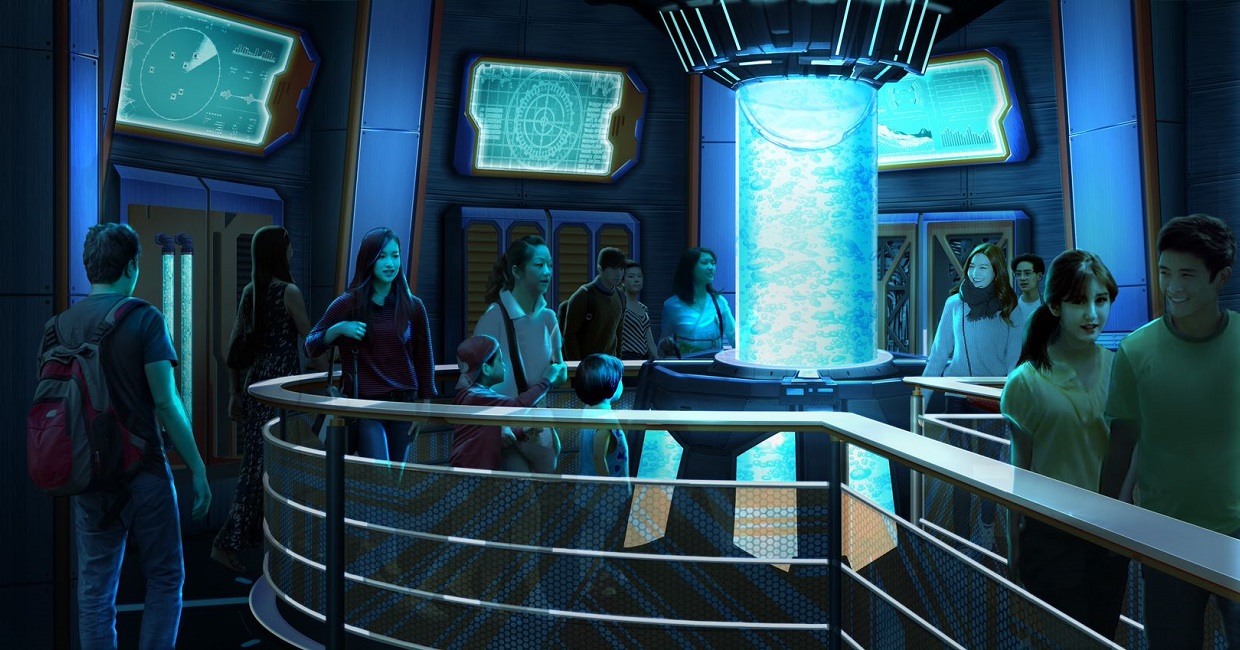
Attraction Queue Concept Art by Falcon's Creative Group
So, how exactly does all that newfound opportunity evolve and establish itself in a blossoming design? To wrap our heads around that, we first need some information about our new ride.
Here’s a little crash course in basic attraction development: Start with the expected overall duration, in seconds, of your ride experience, and divide that by the total number of vehicles in your system.
That calculation provides you with your dispatch interval…the length of time between separate vehicles leaving your load station. Divide that dispatch interval into 3600, the number of seconds in an hour, to find the number of cycles your vehicles will make in one hour. Multiple your total number of cycles per hour by the number of guests in one of your vehicles and you’ll have your attraction’s Theoretical Hourly Capacity, or THRC
THRC is the base metric we use to establish just how long our queue needs to be in order to hold the number of guests we expect to be waiting for that particular experience. Standard practice in a major theme park, especially a park in the warmer environments of California or Florida, is to develop any queue to hold a minimum of one hour’s worth of riders across three distinct areas: Twenty minutes in a conditioned indoor space, twenty minutes in a shaded outdoor space, and twenty minutes in a non-shaded outdoor space.
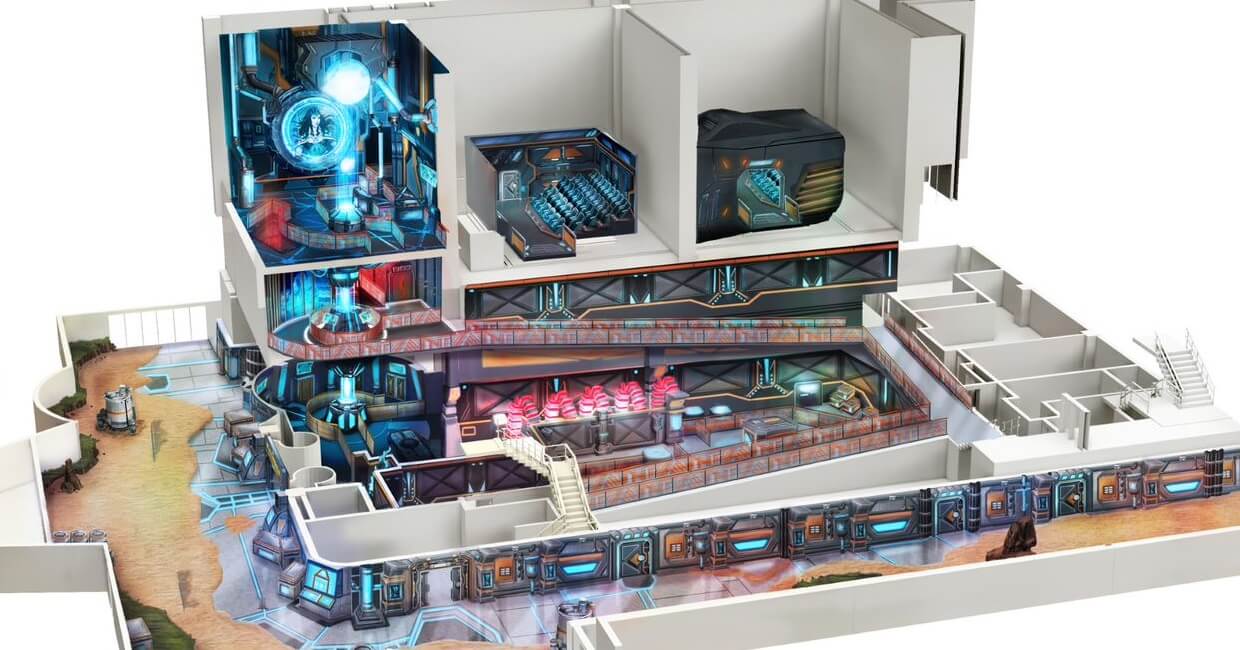
Ride Loading Concept Art by Falcon's Creative Group
Using a standard architectural allocation of one and a half linear feet per person (the average space a single adult occupies when standing in a line), we can multiply by our THRC to quantify the exact length our queue will need to be to accommodate that hour worth of guests. We then wrap that line around props, scenery, walls, and equipment to work with and help define the shape our attraction facility will take on when it’s built. Fun stuff, right?
Now that we understand how to establish the spatial needs of our queue area, we can turn our attention to the experiential needs of our guests and work to find the perfect balance between storytelling opportunity and real-world operational requirements.
It’s this balancing act that produces some of the most exciting discussions and interesting dilemmas we face as designers. How many people can see this screen, hear this sound, or touch this prop at a given moment? What elements are critical to the understanding of the greater storyline and what could be exciting tidbits to discover on a guest’s tenth time through the space?
To paraphrase a lesson I learned from Stuart Craig, my brilliant colleague and mentor during the development of The Wizarding World of Harry Potter: —You should always design a thing as completely and perfectly as you’re able. How will you ever know how and where to compromise if you haven’t thought it all through?— Learning how to successfully navigate this give and take is what separates good designers from great ones, because only when you have a complete and intimate understanding of the story you want to tell can you be prepared to shape the space in which you’re going to tell it.
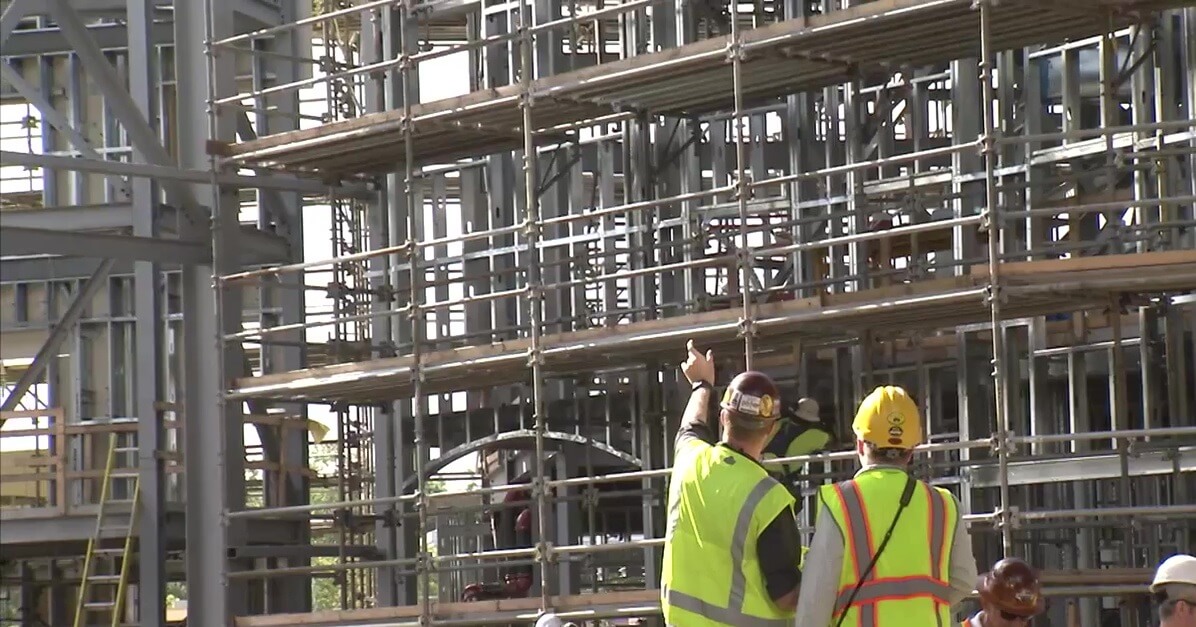
Mike Wallace on site for an attraction queue construction.
In reality, that basic formula can be applied to just about every aspect of Theme Park Design, so let’s re-focus on where queues and queue logic are headed as we move into the future.
We’ve progressed from moveable barricades at the county fair, to posts and chain at the earliest parks, to decorated and scenically beautiful queue areas, and now to fully immersive and often interactive queue scenes.
We’ve embraced technologies like Fast Pass, Quick Queue, and Boarding Groups in an effort to distribute the daily demand of guests and create a more even strain on our attractions, but that’s only the beginning. As technology further permeates our parks, it opens up more and more of those storytelling opportunities we crave.
We’re already leveraging smartphones to interact with content in our lands and queues. We’re not far away from using that same technology to change our on-ride attraction experience based on how we’ve engaged and performed with our stories long before we stepped into line…or perhaps even before we stepped into the park.
The goal is simple: we know we have to wait; the best things in life are always worth waiting for; but, when the waiting itself becomes a seamless part of the show, that’s when everybody wins.



